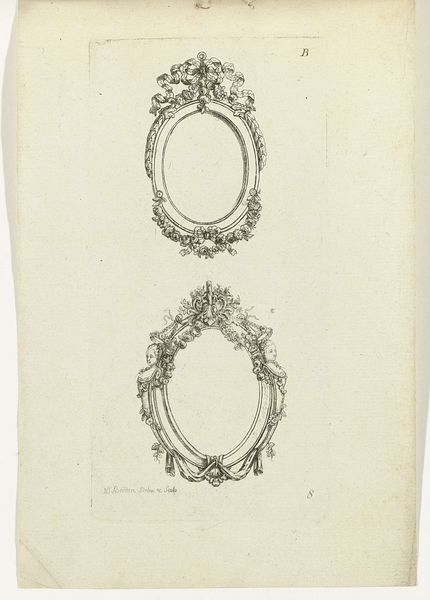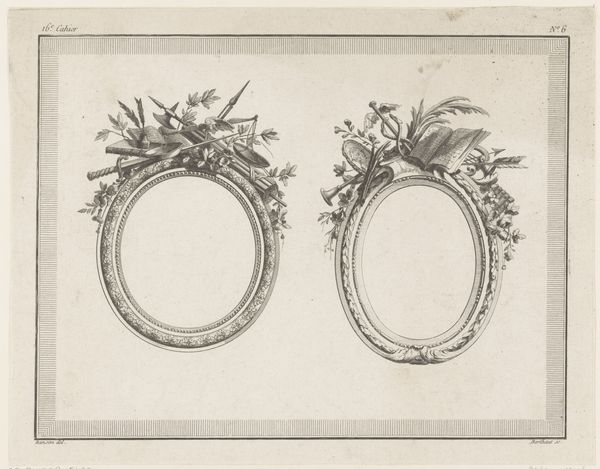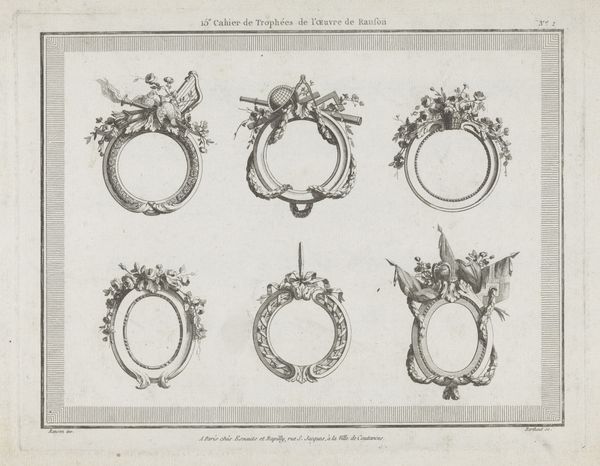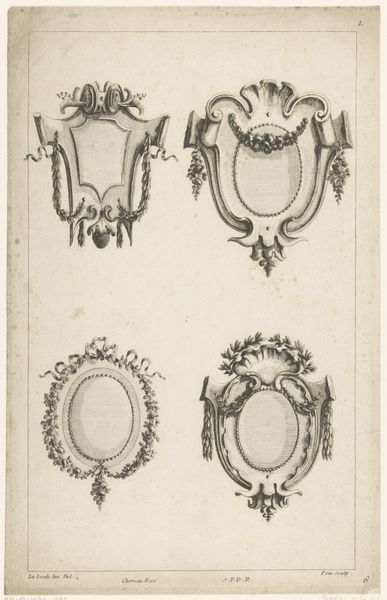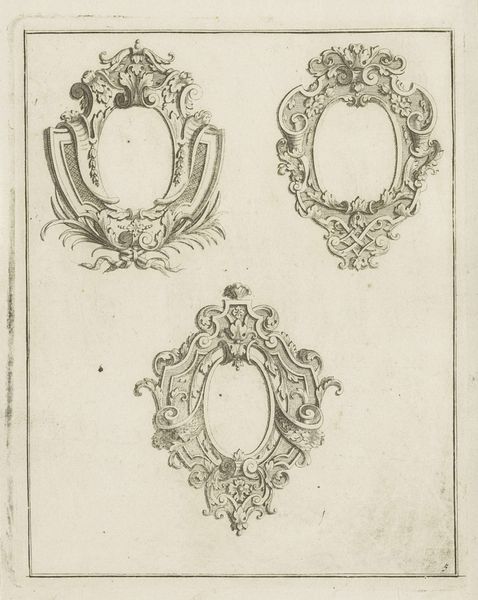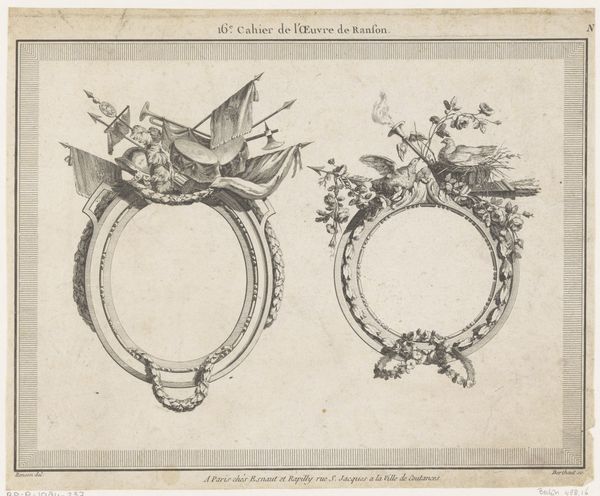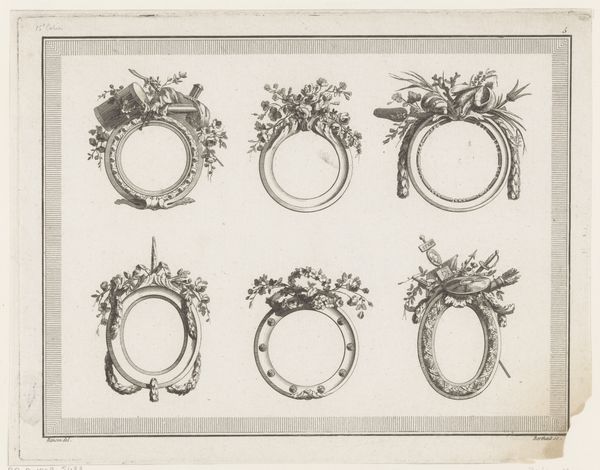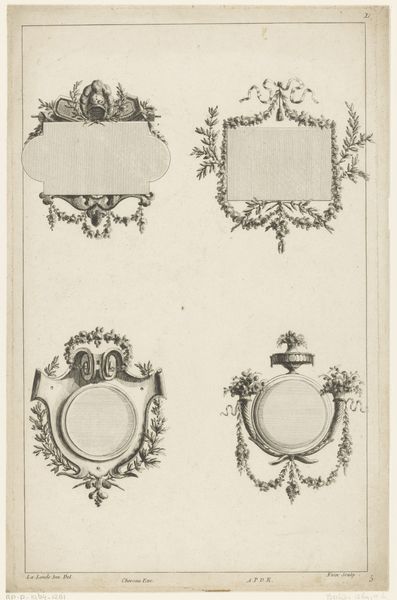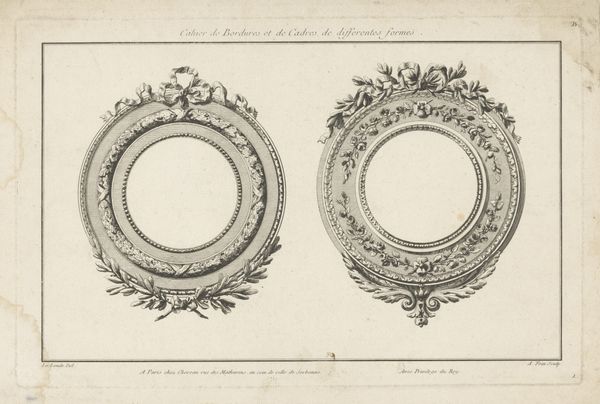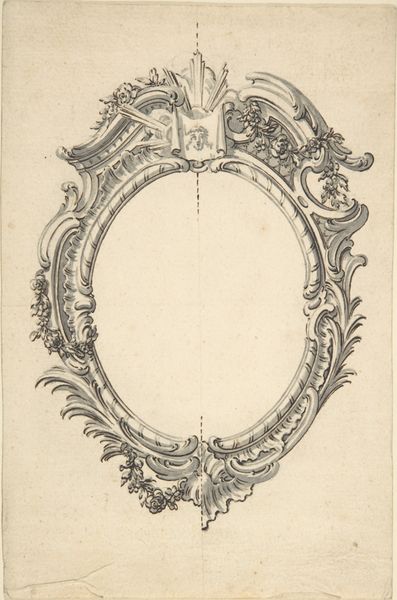
Dimensions: height 165 mm, width 82 mm
Copyright: Rijks Museum: Open Domain
Curator: Welcome. Today, we're observing P.J. Bertren's 1768 pen and ink drawing, "Twee ovale omlijstingen," currently held in the Rijksmuseum collection. It offers a fascinating example of decorative art straddling Baroque and Neoclassical styles. Editor: Immediately striking is the sheer elegance of the piece. The balanced symmetry and precise lines of the ovals convey an almost mathematical harmony. Curator: Indeed. Let's delve deeper into the structure. We have two distinct oval frames, each exhibiting meticulous detailing. The upper one features drapery motifs, a geometric finial, and symmetrical garlands, while the lower incorporates figural heads and leafy ornaments. Note how each line contributes to a delicate sense of balance. Editor: The medium itself—pen and ink—interests me. Think of the labor invested in such precise lines, the specific types of quill used to achieve this texture and fineness of stroke. There's also the process. The planning required must have been exhaustive. This wasn’t casual, off-the-cuff work. How would it serve in a book? And how does that relate to Bertren’s profile? Curator: Functionally, as decorative art, the artwork is intended less for direct symbolism and more for the embellishment of objects or spaces. Given the shift toward Neoclassicism at the time, which favored clean, rational forms, the ornaments here feel rather Baroque still. The wreaths above each frame suggest both achievement and eternity in symbolic languages. Editor: Given the period's social climate, perhaps this embodies wealth. What does such craftsmanship indicate regarding the owner or commissioner’s standing? Such careful deployment of precious material is a status symbol as much as aesthetic indulgence. The frames are a blank stage. Were these guidelines or suggestions for patrons? Curator: Exactly! P.J. Bertren's drawings, including this piece, show an exploration of design vocabularies across eras, demonstrating that even pieces meant to serve function are worth examining under a philosophical lens. Editor: Ultimately, I view it now as a commentary on status, class and wealth, the careful labour a mark of excess beyond merely art.
Comments
No comments
Be the first to comment and join the conversation on the ultimate creative platform.


